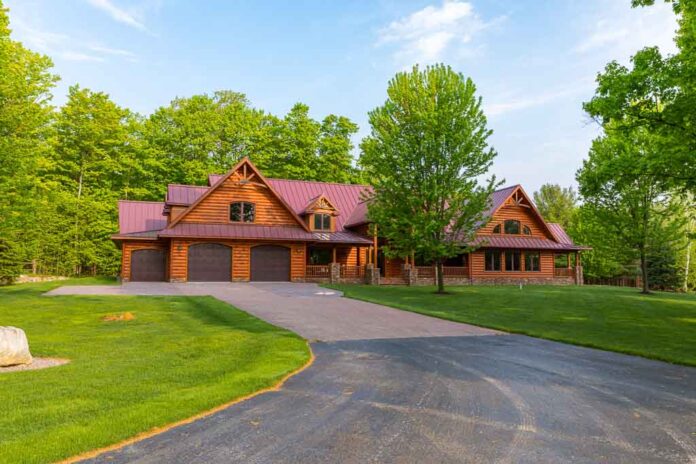You may be surprised to know that some full-log homes are still standing in the U.S. were built as long as 350 years ago. The answer to how long pine and cedar log siding homes last depends on several factors, including:
- Species of wood used for siding and trim
- If the siding is dried to correct moisture content
- The climate of the homeowner – dry, humid, cold, hot
- Quality of wood stain applied during construction
- Quality of wood preservative applied during the life of a home
- How well the wood is maintained and repaired
A few other factors affecting log siding home lifespan include how much direct sunlight the home absorbs, how much shade covers the home, and the quality of the wood. In short, the life of log siding depends on the “3 Rights”: build it right, repair it right, and maintain it right. Let’s take a closer look at pine and cedar log siding.
Why Pine or Cedar Log Siding?
Pine and cedar log siding seem to thrive in just about any climate because of their durability. They possess some other benefits that make them ideal building materials, such as:
- Knotty pine is affordable for virtually all homeowners
- Knotty cedar is more insect and moisture repellent than most woods
- Pine and cedar log siding are more cost-effective than full round or squared logs
- Both are straight-grained that provide rigidity and stability
- Both are easier to work with hand or power tools
- Tongue and groove boards with the end-matching design are fast and easy to install
Don’t forget that pine is a sustainable and renewable product because the trees are grown on tree farms making it a perfect building wood.
Build It Right From the Beginning for Extended Log Siding Home Lifespan
Build it right the first time and you will have a few headaches later. This holds true for log siding homes, cabins, garages, man caves, or workshops. It all starts by selecting a durable wood species like pine or cedar. The next thought is purchasing siding from a mill that dries it to the correct moisture content. Here are some other ‘dos’ when building your home:
- Find a builder that knows what he or she is doing. Don’t go for just the lowest bid because the builder’s reputation is paramount.
- Use the highest quality wood, and it is available at fair prices.
- Create the best joints that stay together
- Use the correct screws, nails, and other fasteners
- Apply the best stain you can afford
- Apply the best wood preservative you can afford
Discuss ‘best practices’ of log siding home building with several contractors to learn more before your build.
| In short, the life of log siding depends on the “3 Rights”: build it right, repair it right, and maintain it right. |
Repair It Right for Log Siding Home Lifespan
There may come a time when repairs to the exterior or interior of your home may be necessary. Wind storms, a fallen tree, flooding, fire, or other forces may cause problems. If this happens, use matching wood materials such as siding or trim instead of taking shortcuts with other materials.
Hire the best craftsmen for the work instead of a handyman with limited experience. Apply matching stain and preservative used when the home was originally built. An option is doing the work yourself if you have the skills and knowledge.
Maintain It Right Over the Years for Long Log Siding Home Lifespan
This step is extremely important to maintain the integrity of the home, the color of your pine or cedar wood, and the log siding home lifespan. All log homes need maintenance over time, and it depends on the quality of the stain and preservative and how well they are applied.
Select the best products and application tools you can afford and you will never be sorry. Follow the manufacturers’ recommendations for the frequency of preserving and how to apply it correctly.
Buy Right in Our Retail Outlets or Online
The building and maintenance materials that meet the requirements discussed above are available from the WoodWorkers Shoppe. Our expert staff is waiting to answer your questions and promptly take your orders.

